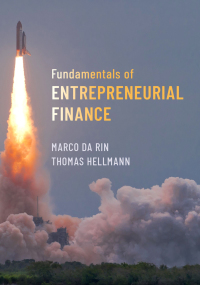Answered step by step
Verified Expert Solution
Question
1 Approved Answer
Hi, can I please get some help with this question? Thank you! Depicted in the accompanying diagram, the function is described by f(x) = =

Hi, can I please get some help with this question? Thank you!
Depicted in the accompanying diagram, the function is described by f(x) = = {"- H-(2H/L) x L/2 0 and its Fourier transform is 2H A(K) - cos (KL/2)) m2 We will apply equation (4-21) in steps to see how well the initial f(x) can be reproduced by a sum. Because A(k) is an even function of k, if we write elke in equation (4-21) as cos(kx) + i sin(kx), the imaginary part of the integral disappears, for the integrand is an odd function of k. The remaining integrand is an even function, so equation (4-21) becomes: +00 f(x) = 2 / A(k) cos(kx)dk 2 JACK 0 (a) First, by direct use of equation (4-22), show that the given Fourier transform is indeed correct. (b) Now, defining H and L to be 1 for convenience, evaluate A(k) at values of k = n(2 w/L), where is 0.1, and 2. Then plot the sum of 2A(k)cos(kx) over these three k values from x = -4 to x = +4. (You may have to displace your function along the k-axis a bit, perhaps to 10-0. A(k) is finite there, but your computer may not think so.) (c) Repeat part (b), but let n run through all integers from 0 to 16. (d) Repeat part (e), but let n run through all half inte- gers from 0 to 16 (i.e., 0, 0.5, 1, 1.5,...), (e) Repeat part (d), but for all quarter integers from 0 to 16. (f) Finally, repeat part (e) for sixteenths of an integer. (g) Your plots may be about right, but something is missing. Multiply the total functions you plotted in parts (e) and (f) by 27/4 and 29/16, respectively. How does this fix things, and why? (h) How do your results show that to produce an iso lated pulse, a continuum of wave numbers is required? Depicted in the accompanying diagram, the function is described by f(x) = = {"- H-(2H/L) x L/2 0 and its Fourier transform is 2H A(K) - cos (KL/2)) m2 We will apply equation (4-21) in steps to see how well the initial f(x) can be reproduced by a sum. Because A(k) is an even function of k, if we write elke in equation (4-21) as cos(kx) + i sin(kx), the imaginary part of the integral disappears, for the integrand is an odd function of k. The remaining integrand is an even function, so equation (4-21) becomes: +00 f(x) = 2 / A(k) cos(kx)dk 2 JACK 0 (a) First, by direct use of equation (4-22), show that the given Fourier transform is indeed correct. (b) Now, defining H and L to be 1 for convenience, evaluate A(k) at values of k = n(2 w/L), where is 0.1, and 2. Then plot the sum of 2A(k)cos(kx) over these three k values from x = -4 to x = +4. (You may have to displace your function along the k-axis a bit, perhaps to 10-0. A(k) is finite there, but your computer may not think so.) (c) Repeat part (b), but let n run through all integers from 0 to 16. (d) Repeat part (e), but let n run through all half inte- gers from 0 to 16 (i.e., 0, 0.5, 1, 1.5,...), (e) Repeat part (d), but for all quarter integers from 0 to 16. (f) Finally, repeat part (e) for sixteenths of an integer. (g) Your plots may be about right, but something is missing. Multiply the total functions you plotted in parts (e) and (f) by 27/4 and 29/16, respectively. How does this fix things, and why? (h) How do your results show that to produce an iso lated pulse, a continuum of wave numbers is requiredStep by Step Solution
There are 3 Steps involved in it
Step: 1

Get Instant Access to Expert-Tailored Solutions
See step-by-step solutions with expert insights and AI powered tools for academic success
Step: 2

Step: 3

Ace Your Homework with AI
Get the answers you need in no time with our AI-driven, step-by-step assistance
Get Started


